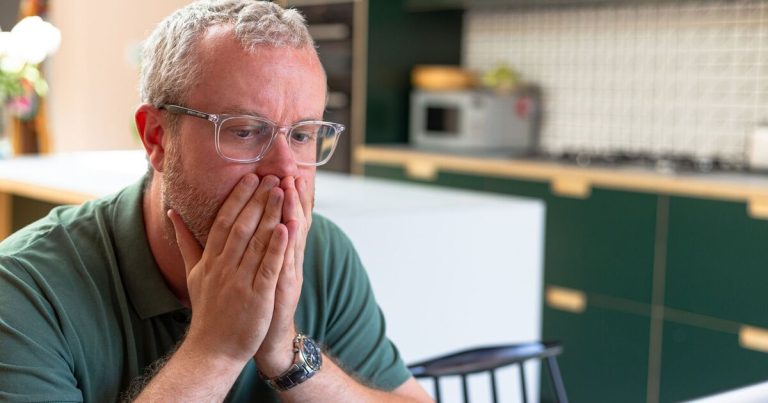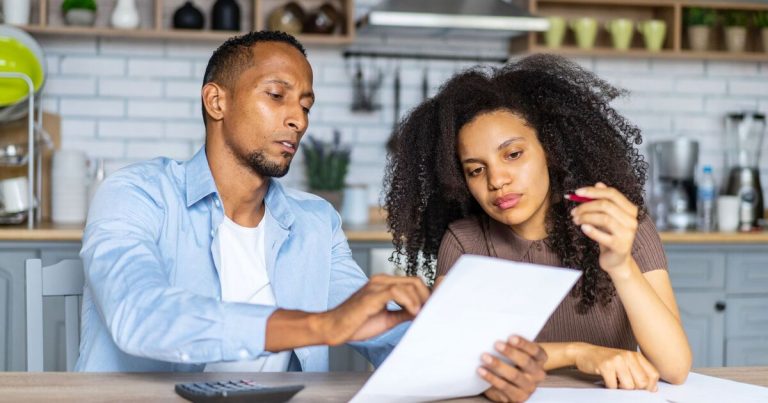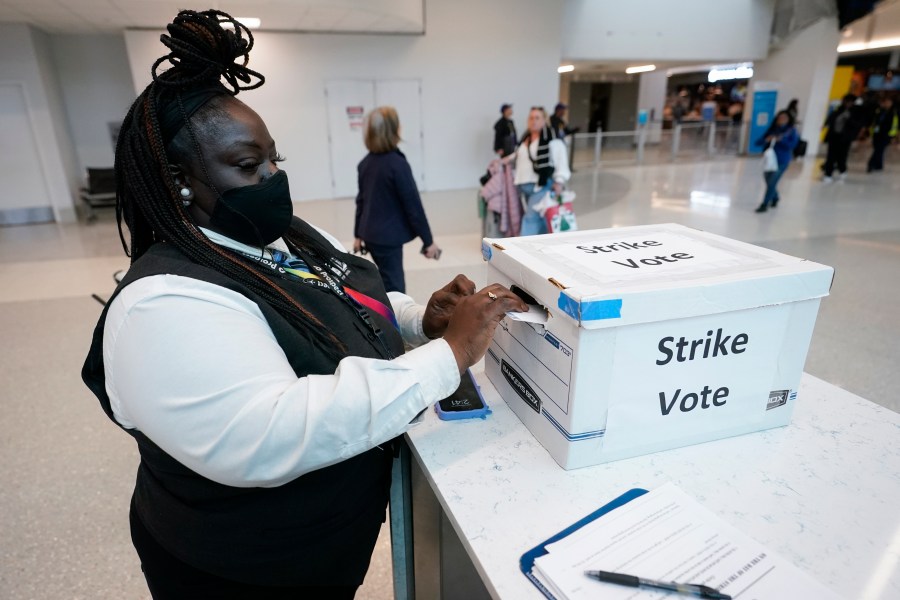
You want to be prepared in case you’re in a car accident, whether or not you caused the collision. Preparation will help you protect your ability to make a car insurance claim against an at-fault driver, and also help you if another driver falsely blames you for the accident.
Here’s what to do in this stressful situation, including how to prepare to deal with first responders, injuries, other drivers, and insurance companies.
Featured Partners
Claim Settlement Ratio
98%
2
ICICI Lombard Car Insurance
Prices Starting From
INR 2,094
Features
Instant claims processing
Prices Starting From
INR 2094 onwards*
Claim settlement ratio
95%+
Features
Instant claim settlement for minor claims and free pick up and drop services (in selected cities)
What To Do Immediately After a Collision
If possible, the first thing you should do is pull your car over to a safe, well-lit place nearby, preferably a public one where others can see both you and the other driver.
That’s especially true “if you are bumped from behind and think you might be the intended victim of a staged accident,” says Scott Holeman, spokesperson for the Insurance Information Institute.
If your car may cause a road hazard, you should move it, even to a sidewalk.
“Stay calm and use emergency flashers to alert oncoming cars,” says Robert Passmore, vice president of auto and claims policy at the American Property Casualty Insurance Association. Even if you’re disoriented, having an after-accident plan and getting through the incident is essential to preserve your rights in a potential claim.
If you can’t move your car, get yourself and any passengers to a safe distance from the collision. However, “you want to make sure you do not leave the scene,” Holeman advises.
Secure Kids, Pets, Seniors and the Disabled
It’s easy to get distracted after a car accident and make mistakes you otherwise would not with loved ones and pets that might lead to additional injury.
If this is a fender bender or minor collision, don’t leave young children, pets, disabled adults, or non-ambulatory elders in a hot, locked car after the accident. Just as you wouldn’t leave them in the car to run into a store or other business, don’t leave the engine off with them in a hot car while you deal with the accident details.
If children traveling with you during the crash are young enough to be in car seats, don’t remove them from the car seats after the accident. They may have injuries you can’t see, so let a first responder remove them from their car seats to assess them for injuries.
Ensure other children stay in the car when it’s safe so they don’t get injured. Do the same for non-ambulatory elders or otherwise incapacitated people traveling with you, even if they are frightened or agitated.
Calling an Ambulance or Law Enforcement
After you and your vehicle are safe, check to see if you or anyone in your vehicle have injuries at the time of the accident. Call fire and rescue or an ambulance if someone shows even minor harm from the accident. You’ll want to get medical help for yourself or others right away, especially if the injured are children, elders, or incapacitated people.
When you call 112, if you don’t know exactly where you are, get someone nearby to give you the location of the accident.
Besides your name and other identifying information they request, prepare to provide the city, street name, and house number you’re closest to, mile markings and traffic signs or signals, travel directions, and whatever else you think will help them find you quickly and easily. Don’t hang up before the dispatcher says you can.
“While it’s not always necessary to call the police, in some states, it’s required,” says Holeman.
States have different methods of alerting police using mobile phones. Some states require that you call 112 only to report accidents. It’s important to know which emergency numbers to call in your state when to report accidents to the state motor vehicles division and the other driving laws in your state before you’re in an accident.
If you’re in a car wreck while out of state, it’s best to call 112. Be prepared for possible long waits for police to respond because law enforcement prioritizes more urgent calls, especially during the pandemic.
If the police can’t come to the scene, have to leave before taking a report, don’t show up because no one got hurt or the involved vehicles are not blocking traffic, don’t panic. Go to the nearest police station and file a report as soon as possible after the accident. Most states allow up to 72 hours to make a police report, but laws vary by state.
You must document the accident with a police report in case the other driver sues you, says Holeman. Get a copy of the police report.
“An accident report may be helpful later in the claims process,” he says.
Talking to the Other Driver
Determine you’re safe talking to the other driver, and if you can do so calmly, without police help.
“If there is any sign road rage may have played a role in the accident, use extra caution when you talk with the other driver,” warns Holeman.
Once you’ve determined it’s safe, “Secure and conceal any valuables before exiting the vehicle,” advises Passmore.
While it’s appropriate to engage in small talk while waiting for the police, refrain from making admissions or blurting out you’re sorry, even when you feel you’re at fault. Avoid expressing anger toward the other driver. Don’t blame the accident on another driver at the scene or accept blame from another driver or witnesses.
“It is best to avoid discussing who is at fault at the scene of an accident,” says Passmore. That’s for the insurance companies to determine.
Also, resist discussing any potential injuries. “You may not always know the extent of damage—to your car or your body—immediately after an automobile accident,” says Holeman. If you’re asked if you or your passengers are okay, say, “Only our doctors can assess our health.” That’s because you rarely know immediately if you or other car passengers have physical injuries. Even in a fender bender, those can take hours or days to manifest.
“When talking to others, keep to the facts,” Holeman says. “Do not discuss who was at fault or how much insurance you have with other drivers.”
Don’t Make Deals About Damage Payments
Don’t make any side deals with other drivers to accept or pay cash for the accident instead of filing an insurance claim, even if the other driver offers a significant sum or claims they have no auto insurance.
Holeman warns that “making a ‘handshake deal’ with cash on the scene could expose you to major expenses down the line.”
Collecting the Right Information
By this point, you’ve had to take so many steps to secure yourself, loved ones, and the vehicle that you might forget to collect some important information. That’s why consistently keeping your documents in order is essential.
“You should always keep important information in your car, like registration, proof of insurance and the name and phone number of your insurance professional,” explains Holeman. “It’s also a good idea to carry important medical information, such as known allergies and your doctor’s name,” he adds. Have similar information for loved ones and pets on hand or easily available.
As you start the document exchange process, “Exchange insurance and contact information only,” says Passmore. That prevents you from saying anything that could get used against you later. Holeman provides this list of what you should collect for insurance claims:
- Name and contact information
- Insurance company and policy number
- Driver’s license and license plate number
- Type, color and model of vehicle
- Location of accident
Be sure to take pictures or video of any damage to both cars, talk to witnesses, write all you can remember about what happened, or even record with audio or video details.
Here are some tips to capture the accident scene.
- Take pictures from multiple angles. You want to capture all sides of the cars involved in the accident, as well as all four corners of each car. Also, take pictures of the damage and any leaking fluids.
- Give the picture a sense of scale. For example, photographing a dent or scrape marks on your fender can help use an object like a coin or a key to give a sense of scale.
- Take pictures from more than one distance. If possible (and safe), stand at least 10 feet away from your car, the other car(s), and/or any other object that you may have collided with (like a street sign). Gradually move toward the point of collision, taking more photos as you get closer.
- Take pictures of the surrounding area. Take photos of the street. If the accident happened at an intersection, capturing any street signs or traffic signals is a good idea. Take pictures of any skid marks or gouge marks left on the pavement or dirt.
- Take pictures of any damage to the car’s interior. This might include deployed airbags and shattered glass.
- Take pictures of your injuries. If you can, take pictures of any scrapes, cuts or bruises. This might come in handy if you need to file an injury claim.
- Take pictures of any other items that will help tell the story. For example, photograph any objects on the road that may have contributed to the accident, including potholes, road construction, or debris that caused a driver to swerve.
After you photograph the accident scene, take pictures of other items that can come in handy. Here are some suggestions:
- License plates. Take pictures of every car involved in the accident. If there are any witnesses, it’s a good idea to take a photo of their license plate, which may be useful for the police or your insurance company if the witness leaves the scene early.
- Insurance documents. When you exchange insurance information, it’s a good idea to ask to take a photo of the other driver’s insurance card. Make sure you capture the company and policy number.
- Police report. If the police respond to the scene and write an initial crash report, take a picture of it. While your insurance company may need a certified copy of the report filed with your state’s registry of motor vehicles (which can take weeks to receive), a photo of the report may help speed up the claims process.
Passmore emphasizes that “the insurance companies will want to know the details of the accident, if a police report was filed, if there were witnesses and any other information that may be pertinent regarding the accident.”
Holeman says that if you have a mobile device, consider downloading and setting up your insurer’s mobile app before any collision occurs to expedite the claims process. A good mobile app can be critical because, besides documenting the accident details, your insurer may be able to send a tow truck and provide rental car options via the app.
“Depending on your policy, you may have roadside assistance, towing services, rental car coverage, or other services available to assist you after an accident,” says Passmore.
Later, save bills and medical records from the accident since you might need them for claims or court.
Featured Partners
Claim Settlement Ratio
98%
2
ICICI Lombard Car Insurance
Prices Starting From
INR 2,094
Features
Instant claims processing
Prices Starting From
INR 2094 onwards*
Claim settlement ratio
95%+
Features
Instant claim settlement for minor claims and free pick up and drop services (in selected cities)
Starting an Auto Insurance Claim After an Accident
It’s essential to contact your insurance company as soon as possible after an accident.
“This will help expedite the claim process, and they may be able to assist you with other services that may be included in your policy,” says Passmore.
While information about the claims process is often on an insurer’s website or mobile app, ask clarifying questions about anything you don’t understand. You must get all you’re entitled to under your policy and state law.
“Find out what documents you need to give your insurer—like a ‘proof of claim’ form,” Holeman adds. “Also, be sure to know if there’s a deadline for filing and when you can expect to hear from your insurance company,” he says.
“Your insurer, or the other driver’s insurer, will likely want to inspect your vehicle to prepare a damage estimate,” explains Passmore. “If your car is still drivable, you may be asked to visit a drive-in claims center, a collision repair shop affiliated with the insurer, or use remote inspection tools such as a smartphone app.”
Many insurers have improved their virtual car insurance claims process, especially during the pandemic.
Using mobile tools helps you get your claim handled faster and back on the road.
Finding Fault for a Car Accident
After you make a claim, providing all the information the insurer requires, insurance adjusters determine the fault and what you’ll receive for repairs or to replace your car if it’s totaled.
Passmore summarizes how fault determination works: “The insurance adjusters for each company will gather the facts regarding the accident and, based on the details and state law, will determine who is at fault or the degree to which each driver is responsible for the accident,” he says.
In states without no-fault laws, insurers use different methods to determine who is at fault. For example, in some states, your claim amount is reduced by your percentage of fault.
“Some states take into account that each driver may bear some responsibility for the accident and, based on the details, will assign a percentage of fault based on their degree of responsibility,” Passmore says. “When disputes cannot be resolved, the courts may ultimately decide.”
“If you have questions at any time, contact your insurance professional or state insurance department,” suggests Holeman.
More Car Insurance Resources
What to Do After A Car Accident Frequently Asked Questions (FAQs)
If it was a minor accident, should I still document the damage?
Even if you were in what appears to be a minor accident, like another car tapping your bumper, it’s worth taking pictures of the damage and exchanging information.
You may want documentation in case you discover more damage later or the other party tries to claim your liability auto insurance.
If I was in a car accident, would my insurance rates go up?
Not all car accidents increase your rates. For example, if the other driver was at fault, you shouldn’t see a rate increase at renewal time.
But if you caused the accident or the police issued you a traffic citation, your insurance rates will likely go up.
Can I get car insurance after an accident?
Yes, you can still get car insurance following an accident, but it won’t help you with a previous crash. If you get into an accident without car insurance, you will be responsible for paying for the damage and injuries without any help from an insurance company.
Plus, if you cause an accident and then seek coverage, you will likely pay more for insurance because of your accident record.





